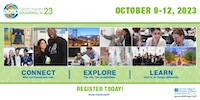- December 1,2015 | ISSN 1940-6967
- The National Association Of Medical Doctors
Featured Sponsors
The Doctor The NFL Tried To Silence
By Jeanne Marie Laskas
In 2002, a Pittsburgh neuropathologist named Bennet Omalu, a native of Nigeria, examined the body of 50-year-old former Pittsburgh Steelers center Mike Webster. At the end of his life, Webster had suffered a steep mental decline, becoming violent, depressed and forgetful and pushed to increasingly desperate lengths to battle chronic pain. In Webster’s brain, Dr. Omalu, who holds multiple advanced degrees and certifications from top American medical schools, discovered what would mark a turning point in the evolution of thinking about the effects of head injuries in professional football. The following excerpt is from “Concussion” published this week by Random House, and is based on the author’s interviews and other research. Laskas’s reporting is the focus of a forthcoming movie by the same name.
In July 2005, nearly three years after he first saw the body of former Pittsburgh Steelers center Mike Webster, Bennet Omalu’s paper about Webster’s brain is finally published in Neurosurgery: “Chronic Traumatic Encephalopathy in a National Football League Player.”
When it arrives in the mail, Omalu holds it gently in his hands like it is parchment.
“We herein report the first documented case of long-term neurodegenerative changes in a retired professional NFL player consistent with chronic traumatic encephalopathy (CTE). This case draws attention to a disease that remains inadequately studied in the cohort of professional football players.”
Omalu marvels at it, the whole time in his mind talking to Mike Webster. “Here you go, Mike, look what we did.”
Some time later, the phone rings. Now Omalu is sitting at his kitchen table with his head cocked to one side, balancing the phone against his shoulder; he is listening to some guy tell him that there is a problem.
“Retracted?” Omalu said. “What do you mean they want it retracted?”
“The demand is pretty forthright. From some notable doctors,” the guy says. He is from the journal’s editorial board, and he is saying three doctors have written a letter to the board demanding that the journal retract Omalu’s work.
“Who?”
“I’ll fax you the letter.”
Retracted. You don’t just retract papers. Retraction was something you did if the author was found to be a fraud. Retraction would be a public humiliation.
“It is a highly professional paper,” Omalu says, his voice rising. “Written and reviewed by highly respected scientists!”
“We’ll need a response,” the guy says. “I’ll fax you the letter.”
Omalu takes a deep breath and thinks: Wait a second. Who are these idiots demanding a retraction?
Omalu stands by the fax machine in his condominium while the pages of the letter come spitting out, single-spaced, six sheets in all. It is longer than the original article. He gathers it and flips quickly to the end page to see who signed the letter. Elliot Pellman, the chairman of the NFL’s handpicked MTBI or “Mild Traumatic Brain Injury” committee.
The NFL guy?
“We disagree,” the letter says.
“Serious flaws.”
“Complete misunderstanding.”
“A serious misinterpretation.”
The allegation against Omalu is that he misinterpreted his own neuropathological findings.
In the coming days, as he prepares his response, he begins to look into the identities of the members of the MTBI committee. It is one thing not to put a neuropathologist on your 14-member brain committee, quite another to have the committee headed by . . . a rheumatologist, as Pellman is.
As a New York Jets team doctor, Pellman is of course on the NFL payroll, as are other scientists on the committee.
Looking back through the literature, Omalu sees that Pellman put forth some conclusions back in 1994 when the committee was first formed. “Concussions are part of the profession,” he told reporters. “An occupational hazard.”
Omalu thinks about Mike Webster, his body getting wheeled in on the gurney, those hands, that scar on his head, those burns on his thighs from the Taser he used on himself.
Neurosurgery does not retract the article. In October 2008, the NFL makes what seems like another attempt to challenge Omalu’s work. It asks to send an independent researcher to West Virginia to look at Omalu’s slides and make his own judgment of the validity of Omalu’s so-called “discovery.”
Peter Davies of the Albert Einstein College of Medicine in New York, a 30-year veteran of Alzheimer’s disease research, is said to be the consummate pro. He will take no money from the NFL, not even parking reimbursement; he will just look at Omalu’s slides and form his own opinion. Davies is more than a little doubtful; he will go on to speak of his skepticism countless times in the media. He has examined thousands of brains, and he’s never seen anything close to the degree of tau accumulation, a classic marker of Alzheimer’s disease, that Omalu has described in his papers. Omalu, he thinks, is well-intentioned but naive. Omalu’s claims are just too far-fetched; he must be mistaken about what he’s looking at. Davies has to be reminded that Omalu is a real scientist, a neuropathologist, not just some guy at a morgue doing autopsies and playing with a microscope.
Davies, Omalu thinks, is an old white guy with silver hair who commands so much respect on the strength of being an old white guy with silver hair.
Nice to meet you, sir,” Omalu says, in a microscopy room at the West Virginia University Hospital.
“Pleased to meet you,” Davies says.
Davies begins to look into the microscope’s eyepiece. Omalu sits on the sidelines, tapping his foot. “Whoa,” Davies says, focusing on the slide. “Wow.”
It goes on like this for two days, slide after slide, the NFL’s independent expert saying “Wow.” Davies is transformed into a believer. It gets to the point where the only doubt Davies has is the staining of the slides themselves. Perhaps the technicians were not using state-of-the-art equipment, Davies says. He asks Omalu if he could take some tissue samples, pieces of brain, back to his lab in New York, where he could make new slides with his own equipment.
“Sure, sure, sure,” Omalu says. “You take some pieces home, talk to your guys, see what you think.”
So in his lab in New York, Davies runs his tests, and when he looks in the microscope, he is stunned all over again. The tau pathology is even worse—even more pronounced—than what he’d seen in West Virginia.
He doesn’t believe his own eyes. He has his techs make new slides.
When he looks in the microscope he sees the massive collection of tau tangles again.
“Come look at this!” he says, calling in his team of researchers. “What the hell am I looking at? This will blow your socks off!”
It is far more severe than anything any of them had ever seen in the most advanced Alzheimer’s cases—and in completely different regions of the brain.
Davies writes a report for the NFL, detailing his findings, saying yes, Omalu was right. He speculates about the role of steroids, and of specific genetic markers, and other possible contributing factors worth pursuing, but the bottom line is that Bennet Omalu is right.
He writes to Omalu: “I remain convinced that you have discovered something…. This discovery could prove of great importance to the field of neurodegenerative disease research…. This is amazing stuff: you really have opened a major can of worms!”
The NFL never releases Davies’s report, never makes it public.
Instead, the league commissions a new study, tries a whole different approach. They send a team of researchers at the University of Michigan’s Institute for Social Research off to do a survey of retired players. More than a thousand retired players. The researchers are to ask the players about health issues, whether they have heart disease, cholesterol problems, cancer, and they are to ask them if they have ever been diagnosed with “dementia, Alzheimer’s disease, or other memory-related disease.”
In September 2009, a year after they began, the Michigan researchers reveal their findings. They find that Alzheimer’s disease, or something very similar, is being diagnosed in former NFL players 19 times more often than in the national population among men ages 30 through 49.
The Michigan study makes headlines. It gets Congress activated. The House Judiciary Committee announces that it will hold hearings. They want NFL commissioner Roger Goodell to answer for this mess. They want the NFL’s MTBI committee.
Everybody who is anybody in CTE research gets the call from Congress to come to Washington to testify.
Bennet Omalu does not get the call.
“Why am I not invited?” Omalu asks a colleague. It will become a refrain—“Why am I left out?”—in the coming years, as Omalu struggles to earn entry to the circles, circles pushing against circles.
Omalu watches from the sidelines. He works on convincing himself he belongs on the sidelines, that he’s happy there, not quite knowing what to do with the fact that if not for his contribution, his discovery, none of the circles would have collided, the CTE light might never have come on.
On a cold and rainy Wednesday morning in Washington, D.C., in October 2009, politicians and scientists and business men and women gather in the Rayburn House Office Building, wearing polite expressions of anticipation.
“There appears to be growing evidence that playing football may be linked to long-term brain damage,” the House Judiciary Committee chairman, Representative John Conyers, says, opening the session. “Is there a link between playing professional football and the likelihood of contracting brain-related injury such as dementia?” Conyers asks Roger Goodell, the NFL commissioner, who is sitting across from him, wearing a powder-blue tie.
“We know that concussions are a serious matter,” Goodell answers. “Our goal will continue to be to make our game as safe as possible.” No one cares more about concussions than the NFL, he says. In fact, they put a team of doctors together to study this very issue.
“I asked you a simple question,” Conyers says. “Is there a link between playing professional football and the likelihood of contracting brain-related injury such as dementia? What’s the answer?”
“The answer is the medical experts would know better than I would with respect to that,” Goodell says.
Two months after the hearing, the NFL does something that catches everyone off guard. On December 20, 2009, they announce a gift of $1 million to Boston University to study CTE. In addition, they will encourage their players to pledge their brains to the university’s new brain bank.
Boston University would go on to produce landmark research about the long-term effects of concussion. But at the time of the announcement, the gift leaves Omalu flummoxed: The NFL would once again be paying for science?
Soon afterward, the Sports Legacy Institute, a non-profit concussion-research group co-founded by a Boston University neurosurgeon, throws Goodell a party at the Boston Harbor Hotel. The institute, an organization distinct from BU, presents Goodell with its Impact Award. They have a big cake. It has a brain on top, made of frosting, in the shape of a football.
When Omalu hears about the party, all he can think of is Mike Webster on the slab. He calls a friend. ‘A cake…’ he tells the friend. ‘A cake.’”
(In response to this book excerpt, the NFL issued a statement saying, “We welcome any conversation about player health and safety. The NFL has made numerous changes to the game to enhance player health and safety at all levels of football. These include nearly 40 rule changes in the last decade, strict concussion protocols, and better training and sideline medical care. We are seeing measurable results, including a 35 percent decrease in concussions in NFL games since the 2012 season. Additionally, we are funding independent scientific and medical research and the development of better protective equipment to advance further progress.”)
COMMENTS
Articles in this issue:
- The Doctor The NFL Tried To Silence
- New York Health Co-Ops Collapse Hits Physicians
- What Cancer Doctors Do Not Know About Cancer Drugs
- No One In Washington Really Cares What Physicians Think
- Doctors Object To High Cancer Drug Prices
- Seeing Through Physicians Eyes: Three Priorities for Pharma
- Hospital Ownership Of Physicians Drives Costs Up
Top Physician Opportunities
Journal of Medicine Sign Up
Get the Journal of Medicine delivered to your inbox.
In This Issue
- The Doctor The NFL Tried To Silence
- New York Health Co-Ops Collapse Hits Physicians
- What Cancer Doctors Do Not Know About Cancer Drugs
- No One In Washington Really Cares What Physicians Think
- Doctors Object To High Cancer Drug Prices
- Seeing Through Physicians Eyes: Three Priorities for Pharma
- Hospital Ownership Of Physicians Drives Costs Up
Archives
Masthead
-
- Editor-in Chief:
- Theodore Massey
- Editor:
- Robert Sokonow
- Editorial Staff:
- Musaba Dekau
Lin Takahashi
Thomas Levine
Cynthia Casteneda Avina
Ronald Harvinger
Lisa Andonis
Leave a Comment
Please keep in mind that all comments are moderated. Please do not use a spam keyword or a domain as your name, or else it will be deleted. Let's have a personal and meaningful conversation instead. Thanks for your comments!
*This site is protected by reCAPTCHA and the Google Privacy Policy and Terms of Service apply.















Tim
December 4, 2015 13:40 14Living in the town Mike Webster grew up in, watching him play center for the Steelers, and being in the healthcare profession as a rehabilitation and prevention specialist really brings the cultural clash and scientific battle to the forefront as our team at Spine & Sport works to assist concussion management in the small schools of Northern rural Wisconsin!